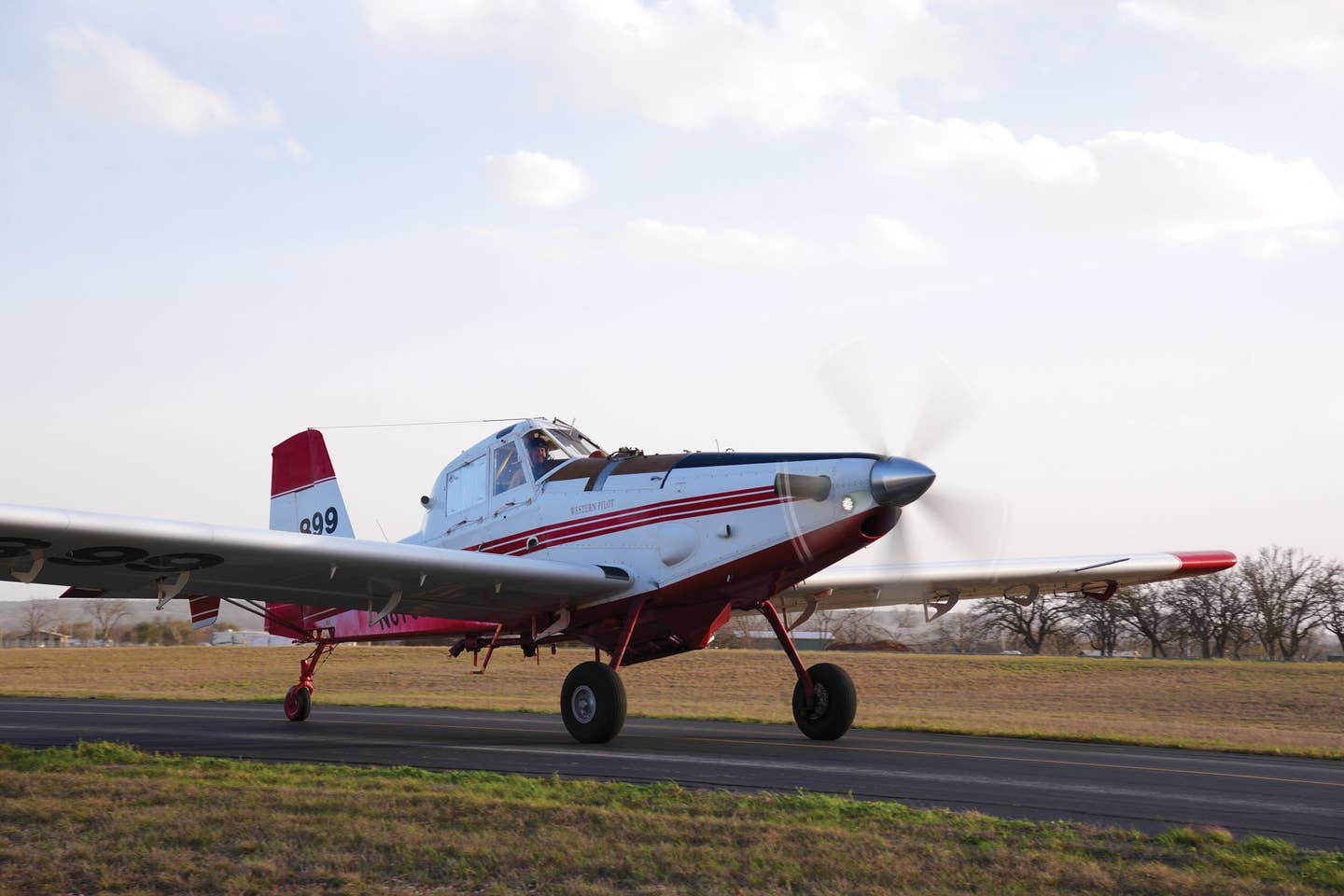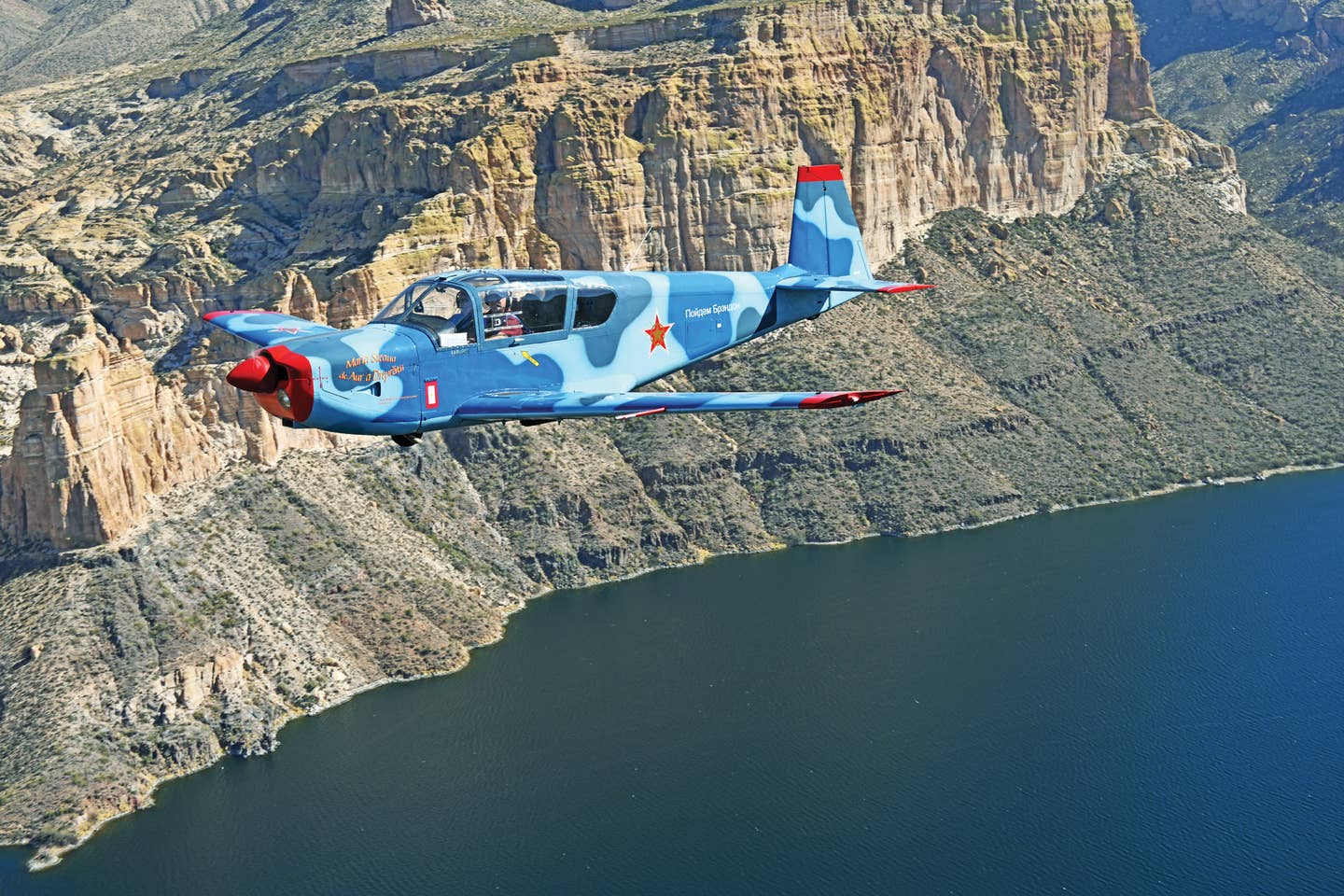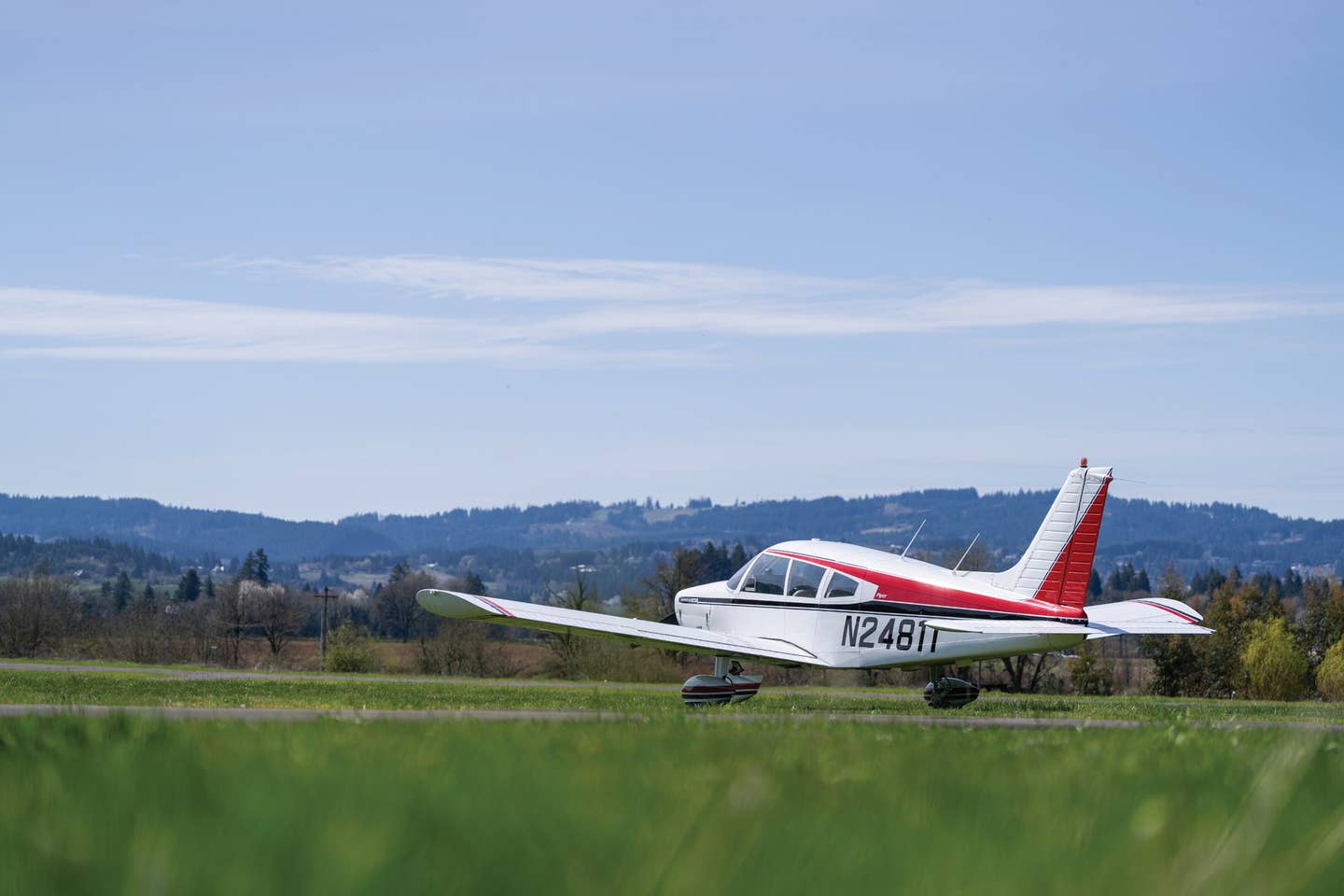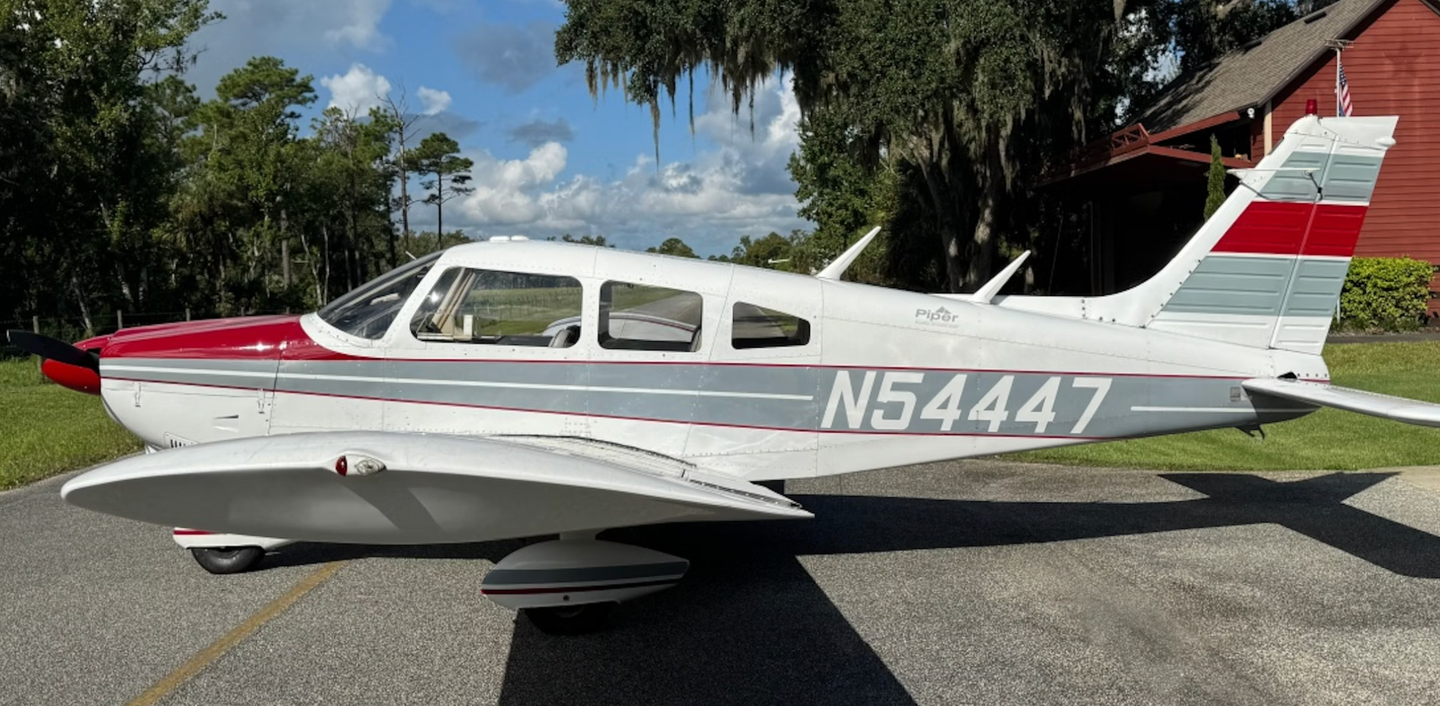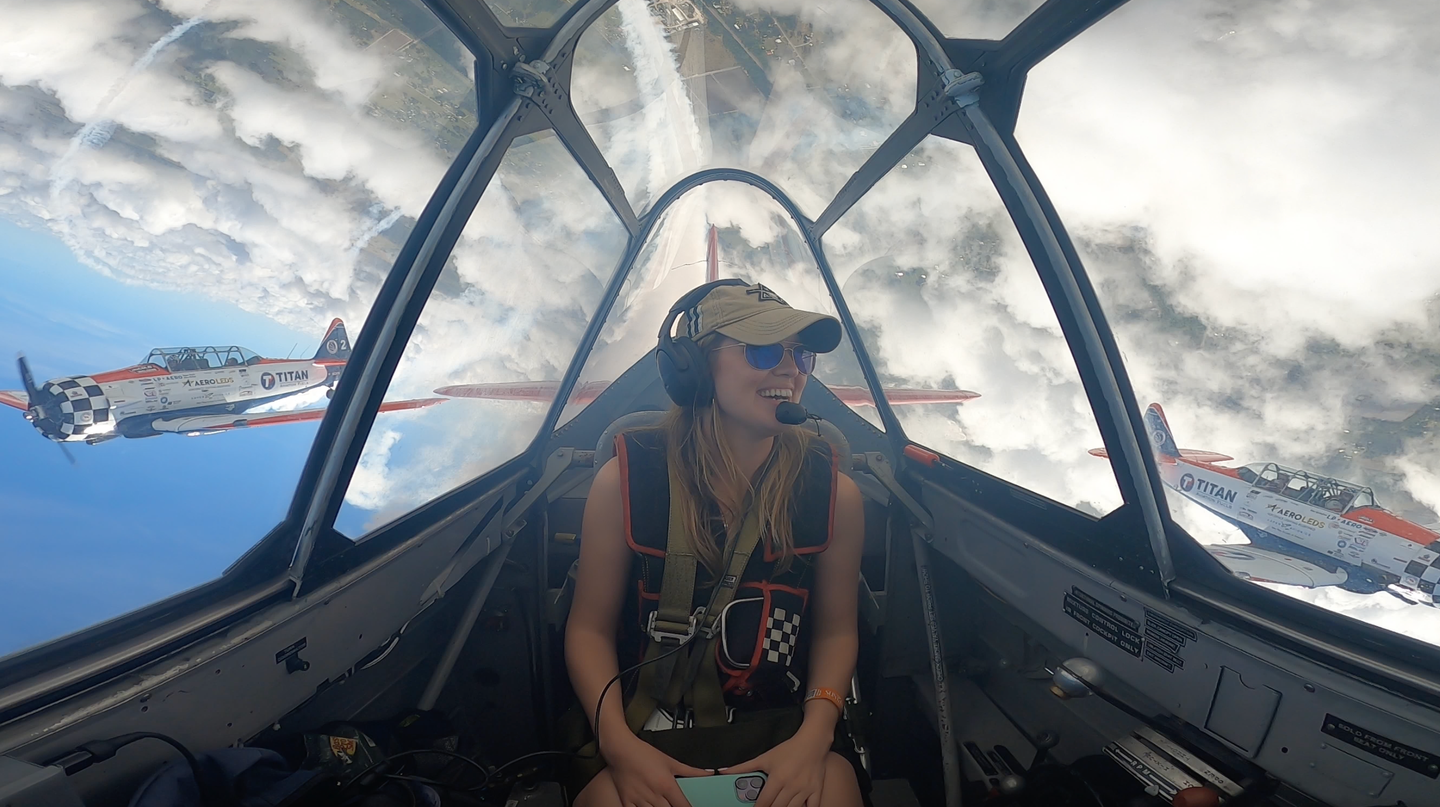Bellanca Aries T-250
Anderson and Greenwood designed a sophisticated travel machine.
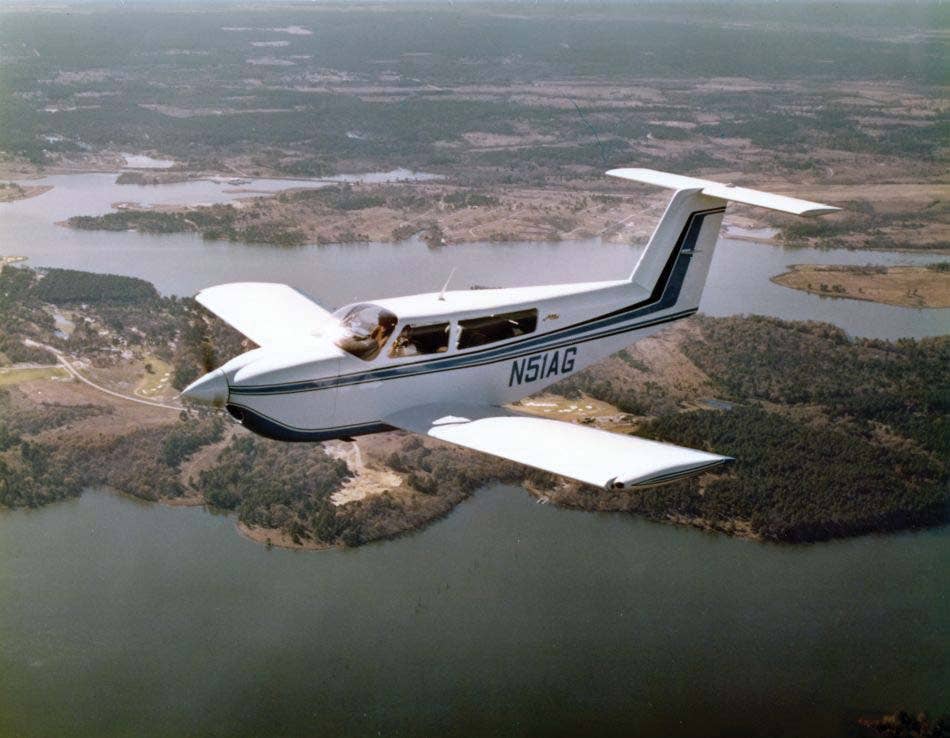
The Bellanca Aries T-250 featured seating for up to five, retractable gear, a distinctive T-tail and a boxy fuselage. [Image: Flickr Commons]
The story goes that if you want to make a small fortune in aviation, start with a large fortune.
Or, in the case of aircraft designers Ben Anderson and Marvin Greenwood, start out as a successful manufacturer of industrial equipment. Then design an airplane and purchase one of the great names in aviation history to produce it.
That is the story of the Bellanca Aries T-250, an efficient, T-tailed travel machine that rivaled the Beechcraft Bonanza and Piper Comanche in speed, load-carrying capacity, and elegant design.
The story begins in 1947 when Anderson and Greenwood formed a company to design and produce inexpensive and innovative airplanes. Their first design, the Anderson Greenwood AG-14, was a 90 hp, twin-tailed, two-seat pusher. This elegant little plane featured very forgiving handling, easy entry and exit, and outstanding visibility due to a rear-mounted propeller.
A third engineer, Lomis Slaughter Jr., was an uncredited member of the design team, possibly due to the public relations problems associated with his last name. However, the Korean War, supply chain issues, and the success of its business producing aircraft structures for other manufacturers sealed the AG-14’s fate after only five were produced.
Fast-forward to the 1970s, and the Anderson Greenwood Company of Houston had grown into a successful manufacturer of industrial valves for the petroleum industry. However, Anderson and Greenwood were still airplane designers at heart and decided to turn their business success into another airplane project.
They formed a team of nine out of their 500 employees and with company chairman Greenwood as the primary designer developed and certified a four-place, 200 mph, retractable-gear airplane with a distinctive T-tail and boxy fuselage. Now they just needed a way to manufacture the new design, the Aries T-250.
About this time, the Bellanca Aircraft Company of Alexandria, Minnesota, was in the throes of financial distress, an unfortunately common occurrence for legacy general aviation companies of the period. Bellanca needed cash and work for its loyal and highly skilled manufacturing team, and the two Houston-based aircraft designers needed an experienced airplane manufacturer to make their dream become a reality.
Once Anderson and Greenwood secured a controlling interest in Bellanca, the Texas design paired with the talented Minnesota workforce seemed a match made in heaven—or at least in a corporate boardroom. The FAA certified the final design in July 1976, and the Bellanca Aries T-250 began limited production.
Before we talk about how this story ends, let’s discuss this remarkable airplane.
Public domain image/San Diego Air and Space Museum Flickr Commons Aug 2024.
Greenwood’s focus for the design was simplicity, efficiency, and utility. In keeping with these goals, the wing is a relatively thin laminar flow design housing two fuel tanks, one in each wing, with a simple left, right, or both selector. There is only one fuel sump drain at the bottom of the system. Due to the wing design, the landing gear retracts inward with the wheels nested under the rear seats. This results in a rather narrow track for the main landing gear, which requires a bit more attention by the pilot during crosswind takeoffs and landings.
The fuselage can best be described as boxy, with a hefty lower section topped off by relatively narrow windows, reminiscent of the modern Chrysler 300/Dodge Charger. The result is a relatively deep and roomy cabin that holds four, and occasionally five, adults in comfort.
The cowling features a single inlet below the spinner, and the Aries T-250 does not require cowl flaps. The T-tail, a novelty in the late 1970s, features a powerful stabilator. Overall, the combination of the T-tail, boxy fuselage, long windows, and narrow landing gear give the T-250 a sturdy appearance on the ramp.
Power was supplied by a Lycoming O-540 producing 250 hp. With 80 gallons of fuel and a 1,300-pound useful load, the T-250 can take four 1970 vintage adults and a little baggage nearly 1,000 miles. Initial climb rate is around 1,200 feet per minute, and cruise speed is in the 170 knot range.
So how does this efficient bird fly? Berl Brechner, reporting for AOPA Pilot magazine in 1977, assessed the Bellanca Aries T-250 prototypes’ flight characteristics this way: “Flying the T-250 is not a particularly complex matter. [The] flight controls are fairly evenly balanced [and the] lowering of flaps and gear has a negligible effect on aircraft pitch.”
Overall, the Bellanca Aries T-250 turns out to be a solid performer with excellent useful load and an airframe that is rugged and simple to maintain. So, with all that going for it, what is the rest of the story?
It appears that just four customer airplanes were produced after the T-250 was certified in 1976. One additional airframe was devoted to structural testing. Unfortunately, Bellanca, the manufacturing partner, was in deeper financial trouble than expected, having just ended the development of its all-composite Skyrocket II. This record-breaking prototype was designed to transition the company from its 1930s classic wood-and-fabric designs to the next generation of GA.
The Skyrocket program was estimated to have cost the company $20 million to $25 million—money that was just not there. Sadly, GA development and certification costs are high, and profit margins low. Thus, by 1980, Bellanca was forced into receivership, and with it went the hopes that the Aries T-250 would achieve the 12-to-14 yearly production rate envisioned by Anderson and Greenwood.
It appears that at least two of the original four production T-250s are still on the active books. They are kept in remarkable condition by their owners and can still carry three, maybe four, 2024 vintage adults, nearly full fuel, and a few bags, over 900 miles in the speed and comfort envisioned by designers
Oh, and if you look up the Anderson Greenwood Company today, it is a very successful corporation producing a variety of valves and other equipment for industries around the nation.
Just maybe, if the financial winds had blown the other way, we might see many more of these incredible planes, the Bellanca Aries T-250, in the air today.

Subscribe to Our Newsletter
Get the latest Plane & Pilot Magazine stories delivered directly to your inbox

